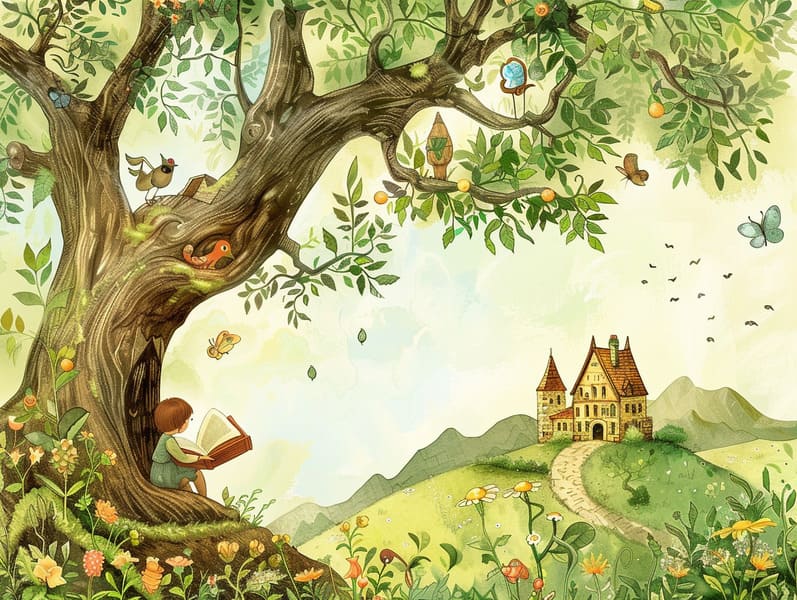The Journey of Bedtime Fairy Tales and the Unwavering Enchantment.
The Journey of Bedtime Fairy Tales and the Unwavering Enchantment.
Blog Article

Historical fairy tales have enduring presence. These narratives have been narrated from one generation to the next far before they were ever recorded. They originated from a variety of civilizations, including European traditions. They were initially conveyed among grown-ups, often carrying themes and messages related to the societal norms and beliefs of the time.
The renowned Brothers Grimm, Jacob and Wilhelm, were among the first to collect many of these beloved narratives. Their published works, "Grimm's Story Collection," included stories like "The True Bride," "Little Brother and Little Sister," and "Little Snow White," which have since become hallmarks in the world of beloved fairy tales. Similarly, the Danish author's delightful narratives, such as "The Story of the Little Mermaid," and "The Ugly Duckling," have gained the love worldwide, solidifying their place in the pantheon of timeless fairy tales.
Even though they are old, these tales remain as important as ever, especially as children's bedtime stories. These whimsical stories are now available in various formats, including colorful picture books, captivating animations, and online fairy tales.
Their persistent charm can be traced to several delightful features:
Ethical Lessons: Traditional fairy tales often provide important moral lessons. Fairy tales like "The Tale of the Boy Who Cried Wolf" teach the virtue of honesty, while "The Race of the Tortoise and the Hare" illustrate the values of tenacity and humility. These stories offer little ones clear distinctions between virtue and vice, guiding their moral compass in a subtle yet significant way.
Sympathy and Perception: Timeless fairy tales frequently portray heroes facing problems and hurdles, inciting audiences to resonate with their struggles and applaud their triumphs. For instance, "Beauty's Beast" points out the importance of seeing beyond the surface to see the true character of a character, cultivating warmth and comprehension.
Cultural Awareness: Many classic fairy tales are deeply ingrained in the cultural contexts from which they arose. Understanding these narratives can provide captivating looks into different historical contexts, building a sense of cultural insight and perception.
Creativity and Imagination: The extraordinary elements in ancient fairy tales—fairy godmothers—fuel children’s dreams. These tales lead readers to enchanted realms, activating creative thinking and a sense of excitement that lasts a lifetime.
Old fairy tales are not only charming but also educational. They work as whimsical tools in developing various mental and emotional abilities in children. When fairy tales are told out loud, they promote communication skills by introducing new terms and detailed sentence structures. This practice also fosters listening abilities and focus, as the young focus on every detail, enthusiastic to see what happens next.
Furthermore, conversing about the themes and characters of classic fairy tales can foster intellectual skills and evaluative skills. Little ones are educated to find patterns, guess what will happen, and get cause and effect. These discussions also contribute to little ones articulate their thoughts and feelings, promoting their emotional intelligence.
In today’s more info information age, the existence of digital storybooks has made these stories more available than ever. Web-based platforms and web apps share comprehensive collections of popular fairy tales that can be experienced or heard anytime, anywhere. Fairy tales told out loud are particularly well-liked, offering an charming way for children to savor these fascinating tales. Sound books and read-out-loud stories carry characters and settings to life, often augmented by captivating sound effects and music that enhance the tale journey.
The lasting appeal of timeless fairy tales lies in their ability to evolve to modern days while holding onto their key morals. Contemporary retellings of these narratives often include more different figures and modern settings, making them familiar to today’s audience. However, the underlying themes of heroism, understanding, and honesty remain unchanged, continuing to influence kids of all ages.
Traditional fairy tales also offer a sense of peace and closeness. They allow a well-structured narrative with a distinct beginning, middle, and end, often concluding with the resolution of conflicts and the triumph of morality over wickedness. This foreseeability can be easing for young ones, delivering a sense of steadfastness in an fluctuating world.
Timeless fairy tales continue to entrance and edify new generations, maintaining their beauty and applicability in modern society. As children's bedtime stories, they grant a perfect blend of captivation and insight, boosting moral values, empathy, and creativity. The availability of online fairy tales and the favor of fairy tales voiced make sure that these timeless narratives remain obtainable to new generations.
By retaining and making known these narratives, we continue to treasure the rich tapestry of cultural legacy and cultural heritage. Whether you are experiencing a richly illustrated book, experiencing a electronic library, or playing an sound book, the enchantment of Grimm's fairy tales is always within reach. These tales demonstrate of the unfading essence of fairy tales and its ability to link us across generations and cultures.
Even if you are discovering a vibrantly illustrated book, experiencing a web collection, or listening via an sound book, the loveliness of traditional fairy tales is always within reach.
These tales emphasize of the undying effect of fairy tales and its ability to connect us across generations and cultures, establishing a link that enchants and educates alike.